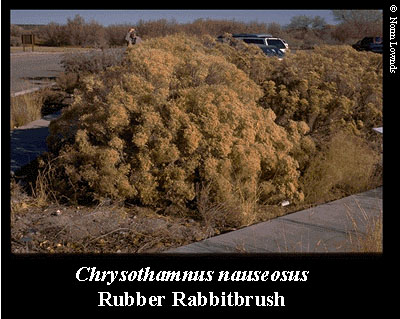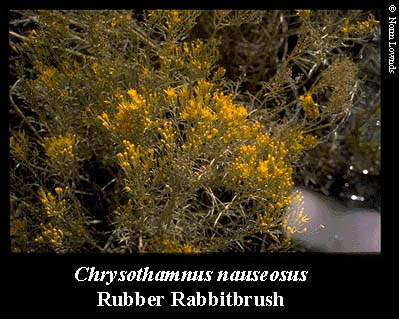Rubber Rabbitbrush
Chrysothamnus Nauseosus


The Chrysothamnus, or Rabbit Brush, is a shrub typical of desert, semi-desert, and other dry soils in south-western North America. They belong in the daisy family COMPOSITAE. Their botanical name, from the Greek chrysos, gold, and thamnos, a shrub, refers to the very apparent blooms on the shrub structure. There are thirteen species of the Chrysothamnus. In dry regions, these shrubs are sometimes planted, but elsewhere they are of little importance. These plants survive well in full sun and in well-drained soil where rainfall is rare. Some species are highly tolerant of alkaline soils, and they may be raised from seeds.
The leaves on these plants are usually alternate and rarely opposite. They are undivided, and have between one and three veins. The flower heads are small but numerous. Often, when the leaves and stems are crushed, a strong odor is emitted. Some species contain traces of rubber, but it hasn't been proven practical of cost-efficient to commercialize this plant. The fruits of this plant are seedlike achenes.
The nauseosus species grows up to seven feet in height, but is often much shorter, depending on the growing conditions. The nauseosus has branches which are permanently felted with white or greenish-white hairs. The leaves are usually three-fourths to two and three-fourths inches long. They range from very hairy to nearly hairless and are narrowly-linear to linear-oblanceolate. When the leaves of this species are bruised or crushed, a foul rubber-like odor is present. In this species, the flower heads are in terminal rounded clusters. This kind is native from Texas and New Mexico to Colorado, Wyoming, Saskatchewan, California, and Brittish Columbia.
-Donny Kramer Agro / Hort 100, Spring 1999